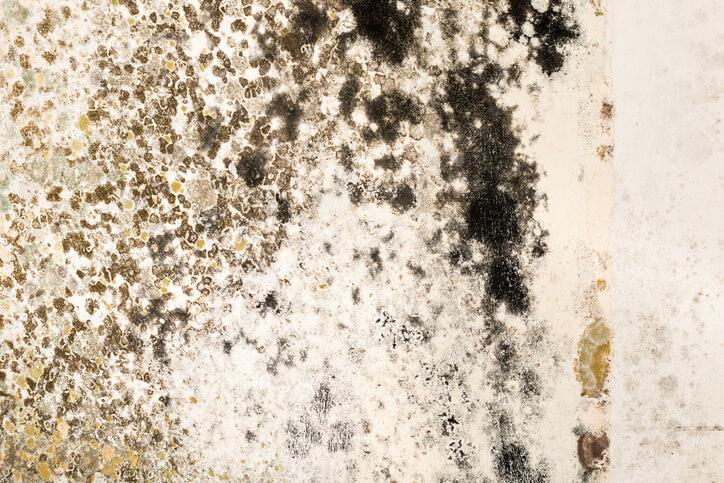Exposure to mold can result in an array of health problems. According to the CDC, some people might exhibit milder symptoms, such as a stuffy nose, rash, or sore throat. However, people with asthma or who are immune-compromised might experience more severe reactions.
Unfortunately, there is no way to completely avoid contact with mold. It is everywhere and can get into your home through just about any avenue. For example, mold often floats through the air and can be carried in through an open window. It can also find its way inside by way of your shoes or your pets.
If there is moisture, there is mold. If your property has recently experienced a leak or is located in a particularly moist area, you should be wary of mold. The telltale signs aren’t as easy to spot as one would think. Mold can grow in any of the following areas:
- Wood
- Cardboard
- Ceiling tiles
- Paper
- Dust
- Insulation
- Paints
- Wallpaper
- Fabric
- Carpet
- Upholstery
As you can see, mold can grow in extremely small spaces, which means you could have prolonged exposure and not even know it.
What does mold look like?
More often than not, mold looks like a group of dark spots. Many people think it is black or green, but it can actually appear in a variety of colors. Regardless of the color, mold smells musty. If you notice mold, you should remove it. Once you remove it, there are several precautions you can take to prevent a toxic mold infestation.
Managing Indoor Humidity
Humidity is one of the primary contributing factors to mold growth. If your indoor air is humid, it has a high concentration of water vapor. This leads to excessive moisture, which is an optimal environment for mold and mildew. This is certainly a problem in areas with high precipitation, but it can occur just about anywhere in the United States.
Recommended Humidity Levels
The Environmental Protection Agency (EPA) recommends keeping humidity levels between 30% and 50%. If you exceed 50%, you might get more than mold and mildew, as cockroaches and dust mites also love high humidity.
You have high humidity if you notice any of the following signs:
- Foggy windows
- Mold spots on walls
- Increased allergies
- Increased night sweats
- Dust mites
- Mildew smell throughout the building
Keep in mind that just because you don’t notice the above doesn’t mean there isn’t mold. The key is to be vigilant and monitor your humidity levels.
Testing Humidity Levels
When it comes to testing humidity levels, a hygrometer is your best friend. This handy device measures air temperature and humidity levels and is available at most home improvement stores.
Maintaining Humidity Levels
Fortunately, maintaining ample humidity levels is fairly easy. First, make sure you have adequate ventilation. Proper airflow will reduce moisture by dispersing the water vapor in the air.
However, good airflow is not as simple as opening a window or activating a fan. You’ll want to make sure you have ventilated exhaust fans installed, especially near areas where people will cook, shower, and wash their dishes.
Use Mold-Killing Products and Mold Inhibitors
Cleaning your bathrooms with mold-killing products can stop any infestations before they begin. Additionally, adding mold inhibitors to paints before you paint the walls will help keep mold away.
Contact a Professional
If you have been injured as the result of a toxic mold infestation, contact an environmental law attorney at Thompson Injury Law today. Our attorneys in San Diego, CA, have decades of experience navigating the complexities of cases involving toxic mold. Give us a call to schedule a free consultation.


